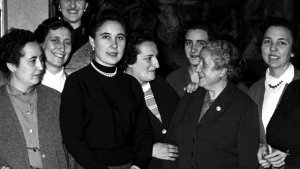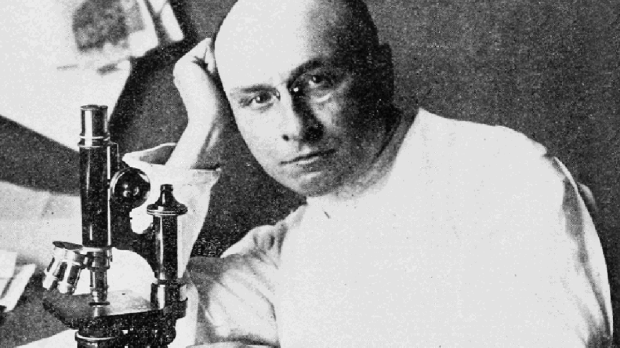From the time of the Blessed Mother’s first apparition to Bernadette Soubirous, the water from the Lourdes Grotto has been a source of miraculous healings, both for those who have visited the Grotto and for those who used the water in remote places. Since the time of Bernadette, more than 7,000 miraculous cures have been reported to the Lourdes Medical Bureau by pilgrims who have visited Lourdes (which does not include miracles that have taken place outside of Lourdes).
There were so many purported cures associated with the water and Grotto of Lourdes that the Catholic Church decided to set up the Lourdes Medical Bureau to be constituted by and under the leadership of physicians and scientists alone. The objective of the Bureau is to render a judgment that a particular cure was near instantaneous, efficacious throughout the remainder of life, and in all other ways, scientifically inexplicable. The Bureau is constituted of 20 physicians and scientists. Its records are open to any physician or scientist who wants to make their own investigation or challenge to any particular case recognized as “miraculous.”
Since 1883, only 69 cases have been recognized as “miraculous” according to the strict standards of the Bureau. But this does not mean that the 7,000 other cures were not miraculous by other standards. These cases simply cannot be shown to be completely scientifically inexplicable – though their occurrence could be truly extraordinary and possibly, or even probably, miraculous.
The 69 cases approved by the Lourdes Medical Bureau have been inspected by large numbers of physicians and scientists, and the vast majority of them have been shown to be permanent and inexplicable cures. A list of cures can be found here.
One of the most significant cases was the healing of Marie Bailly. Her case was witnessed by Dr. Alexis Carrell, and it eventually brought about his conversion.
The miracle of Marie Bailly
In 1902 a physician friend of Dr. Carrell invited him to help take care of sick patients being transported on a train from Lyons to Lourdes. Carrell, at that time, was an agnostic who did not believe in miracles, but consented to help out, not only because of friendship, but also an interest in what natural causes might be allowing such quick healings as those taking place at Lourdes.
On the train, he encountered Marie Bailly, who was suffering from acute tuberculous peritonitis; her abdomen was considerably distended with large hard masses. Though Marie Bailly was half-conscious, Carrell believed that she would pass away quite quickly after arriving at Lourdes – if not before. Other physicians on the train agreed with this diagnosis.
When the train arrived at Lourdes, Marie was taken to the Grotto, where three pitchers of water were poured over her distended abdomen. After the first pour, she felt a searing pain, but after the second pour, it was lessened, and after the third pour, she experienced a pleasant sensation. Her stomach began to flatten and her pulse returned to normal.
Carrel was standing behind Marie (along with other physicians) taking notes as the water was poured over her abdomen, and wrote: “The enormously distended and very hard abdomen began to flatten and within 30 minutes it had completely disappeared. No discharge whatsoever was observed from the body.”
Marie then sat up in bed, had dinner (without vomiting), and got out of bed on her own and dressed herself the next day. She then boarded the train, riding on the hard benches, and arrived in Lyons refreshed. Carrel was still interested in her psychological and physical condition, and so asked that she be monitored by a psychiatrist and a physician for four months.
After that, Marie joined the Sisters of Charity – to work with the sick and the poor in a very strenuous life – and died in 1937 at the age of 58.

Read more:
Miracle approved: This Opus Dei laywoman obtained the healing of a man’s skin cancer
Carrel’s conversion
When Carrel witnessed this exceedingly rapid and medically inexplicable event, he believed he had seen something like a miracle, but it was difficult for him to part with his former skeptical agnosticism – so he did not yet return to the Catholic faith of his childhood.
 Furthermore, he wanted to avoid being a medical witness to a miraculous event because he knew that if it became public it would ruin his career at the medical faculty at Lyons.
Furthermore, he wanted to avoid being a medical witness to a miraculous event because he knew that if it became public it would ruin his career at the medical faculty at Lyons.
Nevertheless, Marie Bailly’s cure seemed so evidently miraculous (being so rapid, complete, and inexplicable) that it became public in the news media in France and throughout the world. Reporters indicated that Carrel did not think the cure was a miracle, which forced Carrel to write a public reply stating that one side (made up of some believers) was jumping to a miraculous conclusion too rapidly and the other side (the medical community) had unjustifiably refused to look at facts that appeared to be miraculous.
As Carrel feared, his advocacy of the possibility of Bailly’s miraculous cure led to an end of his career at the medical faculty of Lyons, which ironically had a very good effect on his future – because it led him to the University of Chicago and then to the Rockefeller University. In 1912, he received the Nobel Prize for his work in vascular anastomosis.
Carrel returned to Lourdes many times, and on one occasion, witnessed a second miracle – the instantaneous cure of an 18-month-old blind boy.
Despite these two miracles, Carrel could not bring himself to conclusively affirm the reality of miracles until 1942, when Carrel announced that he believed in God, the immortality of the soul, and the teachings of the Catholic Church.

Read more:
This is how miracles are approved by the Church
~
This article is an edited excerpt from Fr. Robert Spitzer’s work, Contemporary, Scientifically Validated Miracles Associated with Blessed Mary, Saints and the Holy Eucharist originally published by Magis Center, republished with permission.Click here for the full article by Fr. Spitzer.

